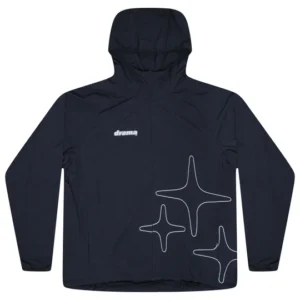Fashion is often seen as an expression of art, creativity, and personal style. But hidden beneath its layers lies a web of drama, intrigue, and, sometimes, conspiracy. Over the centuries, fashion has not only shaped cultural identities. But has also been used as a tool for subtle manipulation, sending messages of power, rebellion, and even control. From the structured garments of ancient royalty to the subversive designs of modern fashion houses. The industry has long been entangled in hidden agendas and unsaid statements.https://dramacallclothing.com/
This article explores the lesser-known side of fashion—the conspiracies and power plays. That have woven themselves into the fabric of history. Influencing everything from political movements to societal revolutions. It’s a deep dive into the drama hidden in fashion’s layers. Revealing how clothing has been used not just as adornment. But as a symbol of something far more complex and enigmatic. The Drama Hidden in Fashion’s Layers
Fashion as a Tool of Control: Power in the Wardrobe
Throughout history, clothing has been used as a powerful symbol of authority and control. From the intricate ceremonial robes of pharaohs to the heavily embroidered gowns of European monarchs. Garments were designed to project not just wealth and status, but also to instill a sense of fear and reverence. Kings and queens used fashion to differentiate themselves from their subjects. With sumptuary laws dictating what could and couldn’t be worn by different social classes. In this way, fashion became an instrument of class division. Where the clothing you wore could literally define your place in society. The Drama Hidden in Fashion’s Layers
In the court of Louis XIV, for example, elaborate fashion was part of the strategy to centralize power. The Sun King mandated an extravagant dress code that required nobility to spend vast amounts on their attire. Thus weakening their financial autonomy and making them more dependent on the royal court. The opulence of the French court’s fashion was not just about vanity. It was about maintaining control over the aristocracy through economic manipulation.
This manipulation of fashion as a political tool isn’t confined to the past. Modern-day dictators have used military uniforms, symbols, and colors to communicate power and control over their regimes. From the tailored suits of political figures to the uniforms of totalitarian states. Fashion has continuously played a role in shaping public perception and asserting authority. The Drama Hidden in Fashion’s Layers
The Hidden Messages Behind Revolutionary Fashion
Fashion has also been used as a vehicle for rebellion and revolution. Often carrying hidden meanings that go beyond the surface level. Throughout history, subcultures have used clothing to make bold statements against oppressive regimes or societal norms. The most iconic example is the French Revolution, where the sans-culottes rejected. The aristocratic silk stockings and knee breeches in favor of simple, practical trousers. This shift in dress was a symbol of solidarity with the working class and a rejection of. The excesses of the monarchy.
Fast forward to the 20th century, and we see the rise of punk fashion, which rebelled against. The commercialization of culture and the rigid norms of the establishment. Designers like Vivienne Westwoo . The Sex Pistols used torn clothing, safety pins, and provocative slogans to challenge the status quo. Their creations weren’t just about aesthetics—they were about making a statement against the mainstream, capitalism, and conformity. The Drama Hidden in Fashion’s Layers
Similarly, during the Civil Rights Movement, clothing played a crucial role in sending messages of resistance. The Black Panther Party adopted the black beret and leather jacket as their uniform. Projecting a powerful image of strength and unity in the face of systemic oppression. Their outfits were carefully curated to convey a sense of militant resistance, turning fashion into a form of political activism.
These examples highlight how fashion has often carried hidden messages that go beyond style. Becoming a weapon of resistance and social commentary.
High Fashion’s Dark Secrets: The Shadows of Exploitation
Behind the glitz and glamour of high fashion lies a world of secrets and scandals. Many renowned fashion houses have been accused of unethical practices. From exploiting workers in sweatshops to sourcing materials in ways that harm the environment. Despite the industry’s sleek exterior, its layers are often woven with controversy, raising questions about the true cost of luxury.
Take the case of fast fashion, for example. Brands that mass-produce clothing at breakneck speed often rely on underpaid labor in developing countries. Factories in countries like Bangladesh, India, and Cambodia have been criticized for unsafe working conditions, long hours, and meager wages. While fashion giants market their products with images of luxury and aspiration. The truth behind the scenes can be far darker, hidden in the layers of exploitation.
Even the world of haute couture is not immune to controversy. Iconic fashion houses have been involved in scandals ranging from plagiarism to the use of offensive symbols in their collections. For instance, some designers have faced backlash for appropriating cultural symbols without understanding. Their significance, turning sacred or historical elements into mere fashion trends.
The drama behind these issues shows that even in the world of luxury. Fashion can be riddled with hidden conspiracies that challenge the ethical values of the industry.
Costuming the Future: The Power of Fashion in Today’s World
As we move into the future, fashion continues to play a critical role in shaping. The way we view society, politics, and even technology. Today, fashion designers are using their platforms to address issues like climate change. Gender fluidity, and sustainability, embedding deeper meanings into their collections.
For example, the rise of sustainable fashion has sparked a movement against the wasteful practices of fast fashion. Designers are now using recycled materials and ethical production processes to create clothing. That is not only stylish but also environmentally conscious. This shift in the industry is a response to growing consumer awareness. Revealing that fashion can also be a force for good when used to promote responsible practices.
Moreover, the conversation around gender and identity in fashion has led to the rise of androgynous clothing and non-binary fashion. By blurring the lines between traditional male and female garments. Designers are challenging outdated notions of gender, allowing people to express themselves more freely. This movement has not only revolutionized the fashion industry. But has also played a part in advancing discussions around gender equality and personal identity.
The continued evolution of fashion reveals its enduring ability to influence and reflect societal change. Whether through the creation of sustainable practices or the embrace of new cultural norms. Fashion remains a powerful tool for shaping the future.
Conclusion: Fashion’s Many Layers of Meaning
While fashion is often dismissed as superficial or fleeting, it has always been a powerful force with hidden depths. The costumes of conspiracy that have emerged throughout history reveal. That fashion is far more than just clothing—it’s a medium of communication. A tool for asserting power, and a weapon for revolution. Whether it’s the lavish garments of royalty or the rebellious uniforms of subcultures. Fashion has consistently been used to send messages that challenge or reinforce the status quo.
Today, the drama hidden in fashion’s layers continues to evolve. With designers and consumers alike using clothing to address issues like sustainability, social justice, and personal expression. As we look to the future, one thing is clear. Fashion will always have the power to shape culture, drive movements, and reveal the hidden dynamics of society.https://financeguruzz.com/




